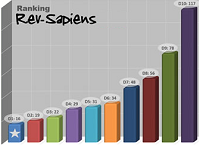El entorno competitivo, ha convertido a la innovación en un aspecto estratégico para la sobrevivencia de las empresas, pero poco se dice de los elementos de la organización que influyen en que estas sean realmente innovadoras. Las prácticas de recursos humanos, por su parte, se han enfocado en comprender al individuo, su relación con los grupos o equipos de trabajo y su incidencia en los resultados, pero poco en analizar como el ambiente laboral incide en la capacidad de innovación de los seres humanos al interior de la organización.
El clima organizacional o laboral, se identifica en la literatura con un gran número de factores relacionados al apoyo laboral, a salud organizacional, a satisfacción laboral, a la cultura organizacional o al compromiso laboral, por mencionar algunos, apareciendo en medio de este mar de literatura uno tipo que no se ha estudiado con mucha profundidad: el clima de innovación.
En la literatura es claro que un clima laboral positivo refuerza la innovación, pues influye en la motivación y la creatividad de los empleados (Amabile, Conti, Lazenby, & Herron, 1996). Al desarrollar una búsqueda se encuentran dos dimensiones interesantes para el mejoramiento de las organizaciones que desean ser competitivas: la orientación al servicio (Schneider, White, & Paul, 1998) y el clima de innovación (Anderson & West, 1998).
Lo que es claro entonces es que, ser innovador no es suficiente ahora, si no que la innovación debe ser respaldada por acciones que permitan tener un ambiente en el que las personas se sientan cómodos con sus innovaciones (Ahmed, 1998) y generar un cambio organizacional sostenido hacia la innovación, es decir, un clima propicio para innovar.
Con este contexto, el estudio de variables que mezclen elementos humanos de la organización con variables resultantes como la propensión a innovar, la innovación misma o el desempeño organizacional, se tornan relevantes para el contexto latinoamericano.




